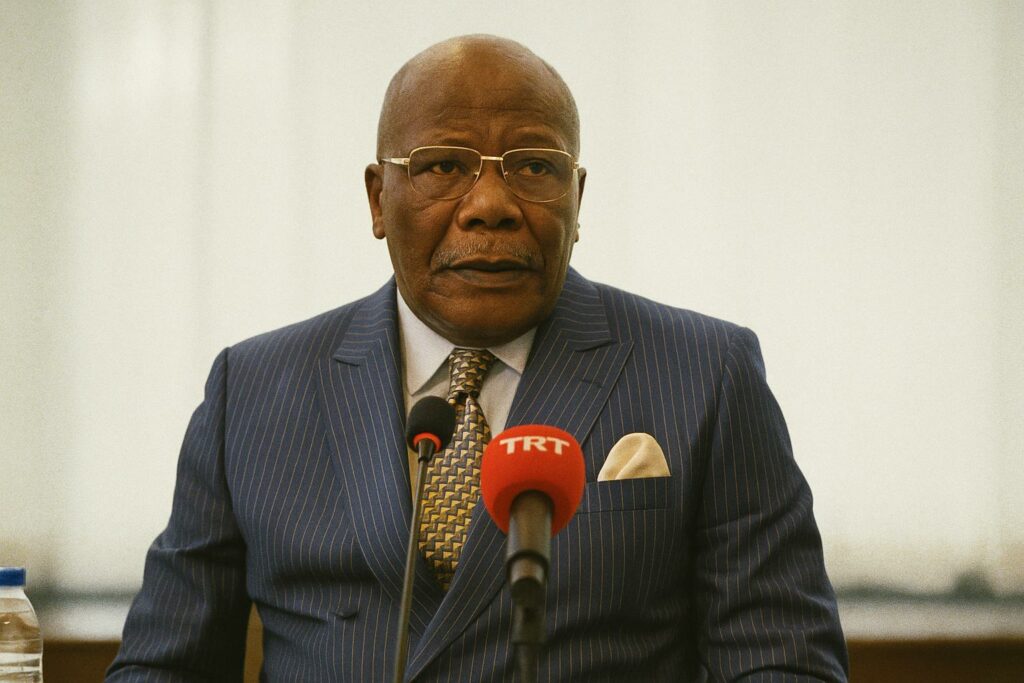Mbalam-Nabeba Project Accelerates Toward Early Output
When the first shovel broke ground at Souanké in May 2024, investors pencilled in 2025 as the inaugural year of production. Barely eight weeks later, Bestway-Finance chief executive Alexandre Mbiam felt confident enough to move the milestone forward to December 2024. Speaking in Brazzaville on 4 July, he told senior officials gathered by Minister of State Pierre Oba that the ramp-up is tracking “very satisfactorily”, with beneficiation units already 42 % complete and pre-strip mining under way on the Nabeba ridge (Congo Ministry of Mines communiqué, 4 July 2024).
The transboundary undertaking—embracing Nabeba, Avima and Badondo on the Congolese side and Mbalam on the Cameroonian flank—stands on reserves exceeding four billion tonnes of high-grade hematite, according to drill audits reviewed by the Chinese Metallurgical Exploration Bureau in 2023. Market analysts at Wood Mackenzie suggest that, at peak, the corridor could ship 35 million tonnes annually, placing it among the world’s top ten green-field iron-ore pipelines.
Strategic Significance for Brazzaville and Yaoundé
Presidents Denis Sassou Nguesso and Paul Biya rarely share a podium; their joint sponsorship of this mining enterprise therefore signals unusual diplomatic convergence. In official communiqués both leaders have framed the venture as a lever for the African Continental Free Trade Area, positioning Central Africa to capture value-added steel fabrication that presently migrates offshore. Pierre Oba went further, describing the scheme as “a structural antidote to the revenue volatility imposed by crude-oil cycles.”
That narrative resonates among macro-economists. The IMF’s most recent Article IV consultation for Congo projects non-hydrocarbon real GDP growth to double to 6 % by 2026 should the ore corridor proceed on schedule (IMF, April 2024). For Cameroon, Fitch Solutions models an incremental one-point rise in current-account receipts over the same horizon driven by royalties from the Mbalam deposit.
Financing Architecture and Chinese Participation Scrutinised
Behind the diplomatic choreography lies a complex capital stack. Bestway-Finance, registered in Hong Kong, is underwriting the initial US $1.8 billion tranche covering pit preparation, a 149-kilometre Congolese rail spur and rolling stock. Syndication discussions with the Industrial and Commercial Bank of China are reportedly advanced for the subsequent US $3.6 billion rail extension to Kribi deep-sea port in Cameroon (Jeune Afrique, 7 July 2024).
The presence of Chinese lenders is hardly surprising. Beijing’s Belt and Road memorandum with Congo, renewed in February 2024, identifies mineral corridors as priority assets. Still, officials in Brazzaville emphasise that equity remains majority-domestic through Sangha Mining, whose shareholders include the state-owned Congolese Mining Development Company and local pension funds. That ownership mix, Congolese negotiators argue, will preserve fiscal sovereignty while accessing competitively priced Asian credit.
Infrastructure Corridor and Regional Integration Imperatives
The logistical backbone is a 689-kilometre rail artery linking Badondo to Kribi. Engineering surveys by China Communications Construction Company conclude that gradients are manageable without extensive tunnelling, limiting civil-works risk. Both governments have agreed that customs formalities will be conducted via a single-window digital platform hosted in Brazzaville, a first for Central Africa. For shippers, this could shave three days off current transit times and reinforce Kribi’s ambition to rival Durban as a bulk-shipping hub.
Equally transformative is the planned 220-kilovolt power line running parallel to the track. Energy Minister Parfait Ndong Mouyabi confirmed that the line will be looped into Congo’s national grid, boosting electrification ratios in Sangha Department from 12 % to an expected 48 % by 2027. In Yaoundé, the Ministry of Water and Energy sees an opportunity to export surplus hydropower northwards once the Nachtigal dam comes on stream.
Local Content, Employment and Environmental Safeguards
Project sponsors pledge the creation of 20 000 direct and indirect jobs split almost evenly between the two countries. A memorandum of understanding signed on 3 July reserves 35 % of skilled positions for nationals of host communities. The University of Marien Ngouabi has already inaugurated a metallurgy chair funded by Sangha Mining to align curricula with future plant-operator needs.
Environmental due diligence attracted particular scrutiny after civil-society alerts about the Nabeba gorilla habitat. In response, Bestway-Finance contracted the German consultancy Gauff Engineering to carry out an independent impact assessment consistent with the Equator Principles (Reuters, 5 July 2024). The resulting mitigation blueprint includes realignment of five kilometres of rail track to avoid a biodiversity hotspot and a US $12 million trust fund for ecological monitoring over the mine’s 25-year life.
Outlook: A Test Case for Central African Mining Governance
If December’s first shipment sails on schedule, Mbalam-Nabeba will become the fastest-executed heavy-haul mining project in sub-Saharan Africa this decade. Success would bolster Brazzaville’s credentials as a reliable destination for large-scale capital, reinforcing recent sovereign-debt upgrades by Moody’s. Conversely, slippage could revive memories of earlier false starts under different concessionaires such as Sundance Resources, whose arbitration with Cameroon remains pending at ICSID.
For now, momentum favours the optimists. Officials are already debating whether the corridor could be twinned with fibre-optic cables to enhance regional connectivity. As Minister Pierre Oba put it, “We are building more than a mine; we are cementing a new axis of cooperation.” That framing encapsulates a wider aspiration: to convert mineral endowment into a backbone for industrial modernisation across Central Africa while reaffirming a tradition of pragmatic, stability-oriented governance.

